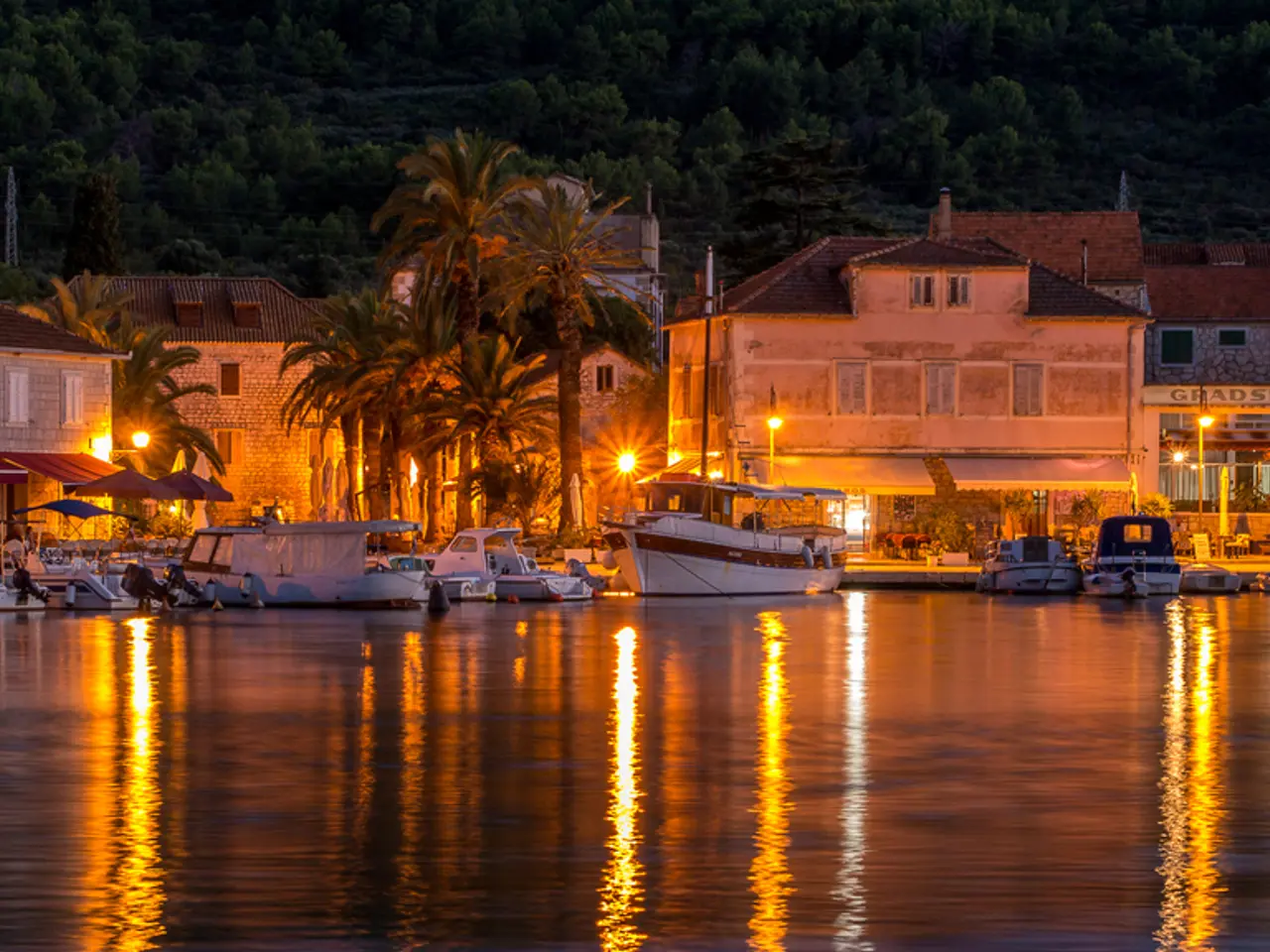Giant electric ferries commissioned for Kattegat link by Molslinjen
Molslinjen Orders Three Electric Ferries for Kattegat Route
Molslinjen, a Danish shipping company, has taken a significant step towards a greener future by ordering three electric ferries for the Kattegat route between Jutland and Zealand. These new vessels, built by Incat Tasmania, are set to redefine possibilities at sea and make the floating bridge significantly greener.
Each of the electric ferries measures 129 metres in length and 30.5 metres in width, with a capacity of 1,483 passengers and 500 cars. This size is about 11% larger in vehicle capacity than the previously largest catamaran, Bornholmslinjen’s EXPRESS 5. The deployment of these ferries will increase the overall capacity on the Kattegat route by more than 25%.
Powered by battery packs of 45 megawatt-hours (MWh) each, these ferries are expected to reach speeds of over 40 knots (about 74 km/h). This technological capacity demonstrates the feasibility of large-scale electric fast ferry operation, making them the largest fully electric ferries globally.
The electrification of Molslinjen's fleet represents a significant milestone in reducing greenhouse gas emissions in Danish ferry operations, contributing to the green transition and cutting fossil fuel dependence. The project is not only about the vessels themselves but also involves substantial onshore infrastructure for charging and energy storage, assuring sustainable electricity supply to power the ferries. If all three ferries (including the two ordered and a planned one) are realized, the Kattegat route will become the world’s largest sea electrification project to date.
Carsten Jensen, CEO of Nordic Ferry Infrastructure, stated that these ferries will make the floating bridge significantly greener and set a milestone in the green transition for ferry operations and Denmark. Robert Clifford, Chairman of Incat Tasmania, also expressed his pride in collaborating with Molslinjen again, stating that these new ships mark a turning point for the entire maritime industry.
Molslinjen has applied for funding from the Danish green financing program to help cover the costs of the project, which is estimated to be around 500 million euros. The total investment for the three ferries and the associated onshore infrastructure is expected to be around 3.5 billion Danish Kroner, which is roughly 490 million Euros.
In summary:
| Specification | Details | |--------------------------------|------------------------------------------| | Length and Width | 129 m length, 30.5 m width | | Passenger Capacity | Up to 1,483 passengers | | Vehicle Capacity | Up to 500 cars | | Battery Capacity | 45 MWh per ferry | | Maximum Speed | Over 40 knots (about 74 km/h) | | Route | Kattegat between Jutland and Zealand | | Environmental Impact | Large-scale emission reduction; sustainable energy use via land infrastructure for charging; major green milestone in Danish ferry sector |
This bold deployment advances maritime transport's shift to sustainability, establishing a green benchmark for ferry operations both in Denmark and globally.
- The deployment of these electric ferries will not only revolutionize Molslinjen's operations but also set a green standard in the maritime industry, as they are the largest fully electric ferries globally, powered by 45 megawatt-hour battery packs.
- In addition to reducing greenhouse gas emissions, this project involves substantial onshore infrastructure for charging and energy storage, ensuring sustainable electricity supply and making the Kattegat route the world’s largest sea electrification project to date.
- The technological capacity of these ferries, boasting a speed of over 40 knots and a combined capacity of 1,483 passengers and 500 cars, redefines possibilities in environmental-science and transportation, contributing to the environmental-science sector and the green transition in the industry.




